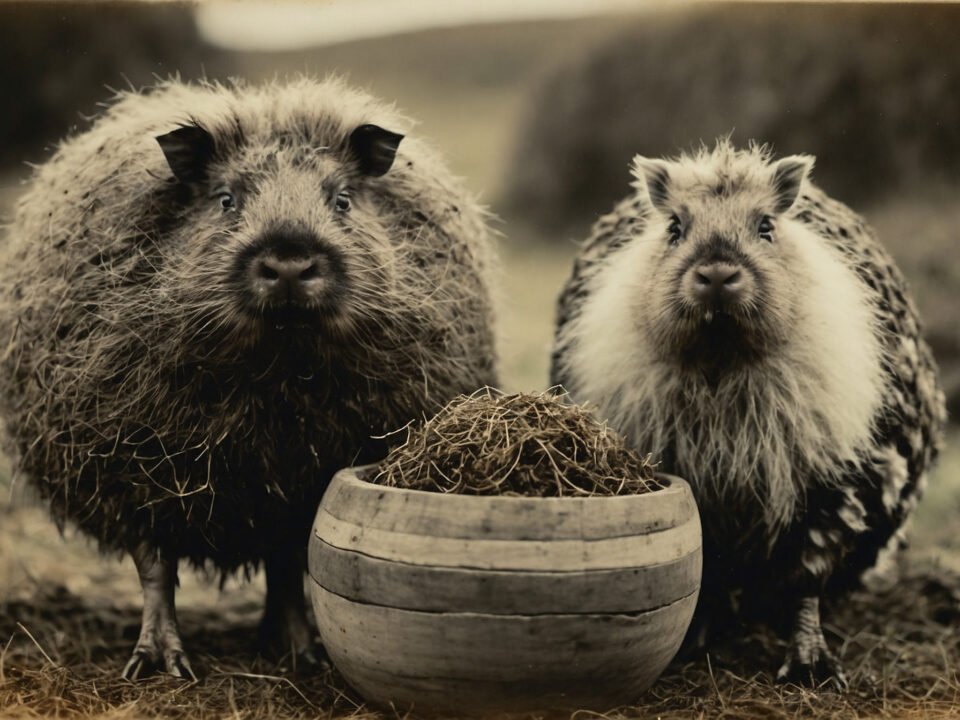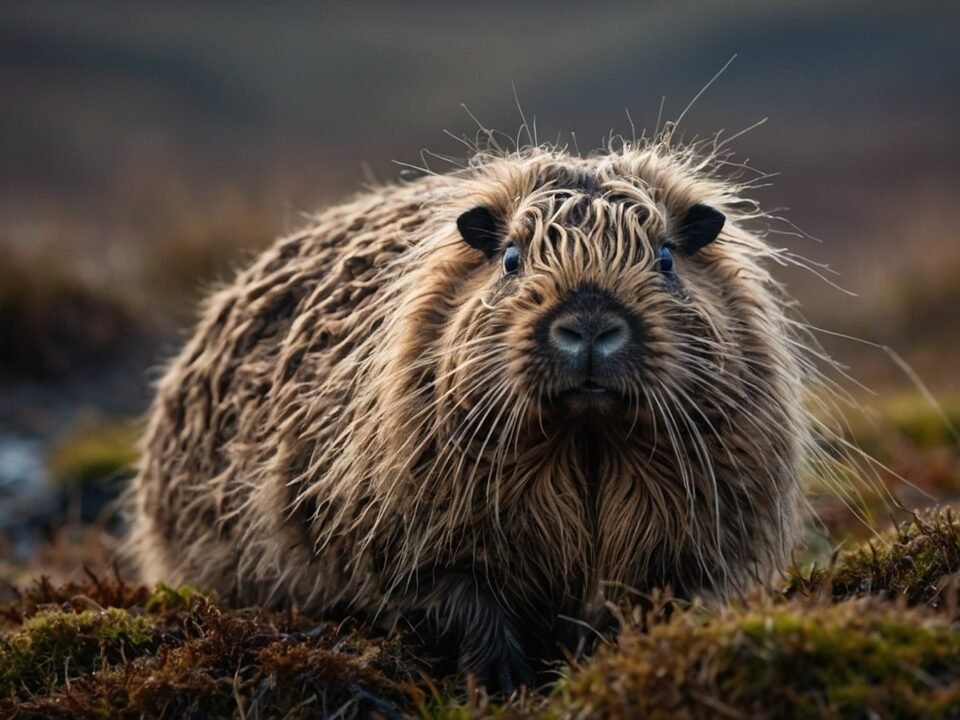
The Haggis: Scotland’s Enigmatic Highland Mystery
October 24, 2023Encountering the Elusive Haggis in the Scottish Lowlands
Author: Haggis Wildlife Foundation
Date: October 16, 2023
This document provides a comprehensive beginners guide to Haggis Hunting and encountering the haggis, including information on the best places to spot them, tips for observing them, and methods for respectfully capturing photographic evidence of them. It aims to promote appreciation for the haggis and shed light on Scotland’s legendary creature.
The Haggis
The haggis is an iconic yet mysterious creature in Scottish folklore, long the subject of myths and legends, two distinct varieties of haggis are said to exist – the small, nimble lowland haggis which reaches 20 pounds, and the larger upland haggis which can surpass 30 pounds. Descriptions of the haggis stretch back hundreds of years in Scottish literature and oral tradition, depicting a scruffy, wild mammal with four legs, shaggy fur, and long whiskers. Yet despite countless stories and speculations, confirmed evidence of the reclusive haggis has remained scarce over the centuries. Only a handful of blurry photographs and fleeting eyewitness accounts exist to fuel interest in the creature.
In recent decades, advances in remote monitoring equipment have sparked renewed hopes of sightings. Ecologists aiming camera traps in remote glens occasionally capture mysterious shapes and shadows consistent with descriptions of the haggis. Adventurers returning from the highlands share tantalizing tales around campfires of odd cries and glimpses of unidentifiable beasts.
These scattered modern sightings continue to pique scientific curiosity about better understanding the elusive haggis and its natural behavior in the wild. As a protected and cherished part of Scotland’s natural heritage, it is imperative not to disturb or harm haggis. Photographing haggis should only be attempted using long-range telephoto lenses of 400mm or greater to avoid stressing the creatures. If approaching on foot, move slowly in a crouched position to minimize your silhouette, and pause frequently to avoid snapping twigs or rustling brush which may startle them.
Never attempt to touch, feed, or restrain a haggis – respect their space and freedom. Recording detailed notes on haggis behavior from a distance provides valuable scientific insights without invasive interaction. Look for behaviors like grooming, foraging, vocalizations, and interactions with other haggis to enrich our understanding of their habits. Collection of scat or fur samples should only be done with proper permits to avoid disturbing populations. The haggis remains one of Scotland’s most treasured yet least understood creatures.
As human activities like development, forestry, agriculture, and tourism encroach further on the Scottish highlands, intact haggis habitats shrink, and sightings grow increasingly rare. Yet opportunities remain for researchers, naturalists, and photographers to responsibly observe and appreciate this legendary animal in its natural setting through non-disruptive practices.
This guide hopefully illuminates a respectful path forward that researchers and enthusiasts alike can follow to glimpse the haggis, understand its behaviors better, and document it for posterity before habitats degrade further. While the haggis may never be abundant, with care and consideration, we can still uncover the secrets of Scotland’s elusive icon.
Where to Encounter Haggis:
- The remote glens and peat bogs of the Scottish lowlands provide the best opportunities to spot haggis. Areas with heather, ferns, and thick vegetation are prime haggis terrain. Water sources like streams and ponds also attract them. Dawn and dusk are optimal times for observation. Patience is required, as the haggis is a master of camouflage.
- Look for haggis tracks and droppings to aid in locating them. Haggis tracks feature three toes with long claws, clearly distinguishable in soft earth. Droppings may resemble those of badgers but contain more vegetable matter. Finding fresh tracks and droppings indicates a haggis passed through recently.
- Be patient and still, as haggis can be active one moment and hidden the next. Haggis are quick and can disappear into a burrow or thicket in seconds. Sit quietly in one spot scanning the landscape, ready to spot the telltale signs of haggis movement. A flicker of motion in the brush, a snout poking from a hole, or branches rustling may reveal a haggis.
- Focus your search near water sources, in thickets, and on mossy rocks where haggis dwell. Haggis need a source of fresh water to drink from and are adept swimmers. Dense thickets surrounded by open terrain allow haggis to hide and monitor their surroundings. Mossy rocks provide cover and humidity for their dens. Promising locations contain some combination of these features.
- Join an experienced tracking excursion to learn proper haggis observation techniques. Novice haggis watchers will benefit tremendously from the hard-earned knowledge of seasoned experts. A responsible guide will share tips on optimal sites, times, camouflage methods, and equipment for photographing haggis without disturbing them. An expert eye will also help correctly identify haggis signs.
Safety:
- Never approach or touch a haggis, as startling them may provoke an attack. Haggis are generally not aggressive unless provoked, but their sharp claws can inflict injury if they feel threatened. Keep your distance and never surround or touch a haggis.
- Beware of defensive behaviors like charges if a haggis feels cornered or threatened. Watch for signs of distress such as haggis bark warnings, shuddering fur, or stomping feet. If observed, calmly back away to give the haggis space before the situation escalates.
- Give ample space and remain quiet if a haggis indicates it feels distressed. Respect the haggis’s need for personal space and privacy, especially if babies may be nearby. Any odd vocalizations, frightened body language, or aggressive displays warrant slowly and silently moving away.
- Move away calmly if a haggis acts aggressively or makes its haggis bark warning call. Do not panic or run, as this may trigger a chase response. Instead, slowly and steadily increase your distance from the haggis while speaking reassuringly. This will de-escalate most situations.
Photographing and Observing Haggis:
As a protected and cherished part of Scotland’s natural heritage, it is imperative not to disturb or harm haggis. Photographing haggis should only be attempted using long-range telephoto lenses. If approaching on foot, move slowly and quietly to avoid startling them. Never touch or restrain a haggis. Recording detailed notes on haggis behavior provides valuable scientific insights. The haggis remains one of Scotland’s most treasured yet least understood creatures. As humans encroach further on its habitat, sightings grow increasingly rare. Yet opportunities remain to responsibly observe and appreciate this legendary animal in its natural setting. This guide hopefully illuminates a respectful path forward to better understand Scotland’s elusive haggis.
Tips for Encountering Haggis:
- Use the haggis call to attract their attention from a distance. The traditional haggis call is a high-pitched whirling whistle followed by a low groan. Execute it sparingly so as not to overwhelm them.
- Be extremely quiet and cautious when on foot to avoid disturbing them. Move slowly in a low crouch, avoiding snapping twigs or rustling leaves. Wear muted natural fabrics that blend into the landscape. Stop frequently to scan surroundings and listen for haggis sounds.
- Take detailed notes on haggis behaviors like grooming, feeding, and social interactions. Record specifics on actions, vocalizations, locations, weather conditions and any reactions to your presence. Photos and videos from a distance can supplement notes. Be patient and still to enable observation.
- Use camouflage clothing like ghillie suits to avoid alarming haggis when observing them up close. Disguise your silhouette by blending into vegetation. Set up hides or blinds near haggis trails and water sources to conceal yourself. Remain downwind so they cannot detect your scent.
- Always photograph from afar with telephoto lenses 400mm or longer to respect their space. Get low angles from behind foliage to reduce visibility. Silence camera sounds and movements to prevent startling them. Take sequences of images versus prolonged video to minimize disruption.
- Follow haggis signs like tracks and droppings to areas they frequent but remain quiet upon arrival.
- Monitor fields and glens at dawn and dusk when haggis are most active.
- Pack hiking snacks that make little noise like nuts versus crunchy items. Turn off electronic devices and avoid loud voices.
- Record the date, time, weather, location and habitat details alongside any haggis observations for research context.
- Practice patience daily when not haggis tracking to hone stillness and observational skills.





